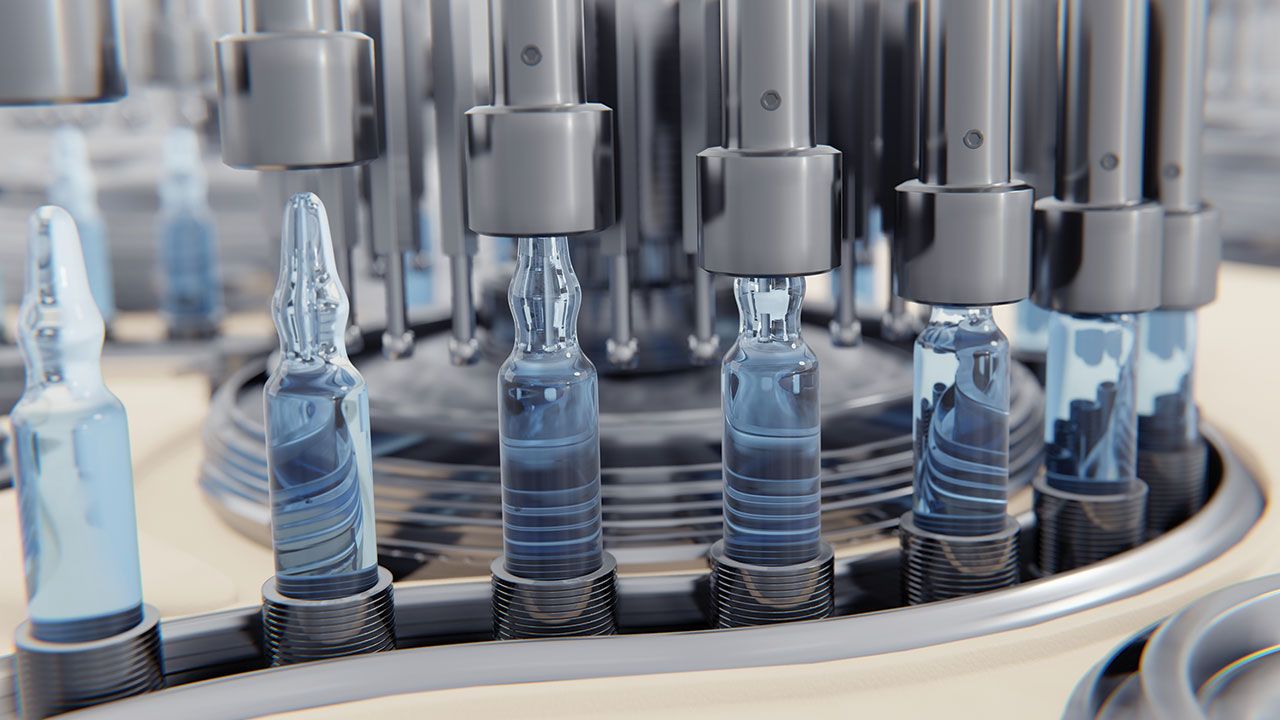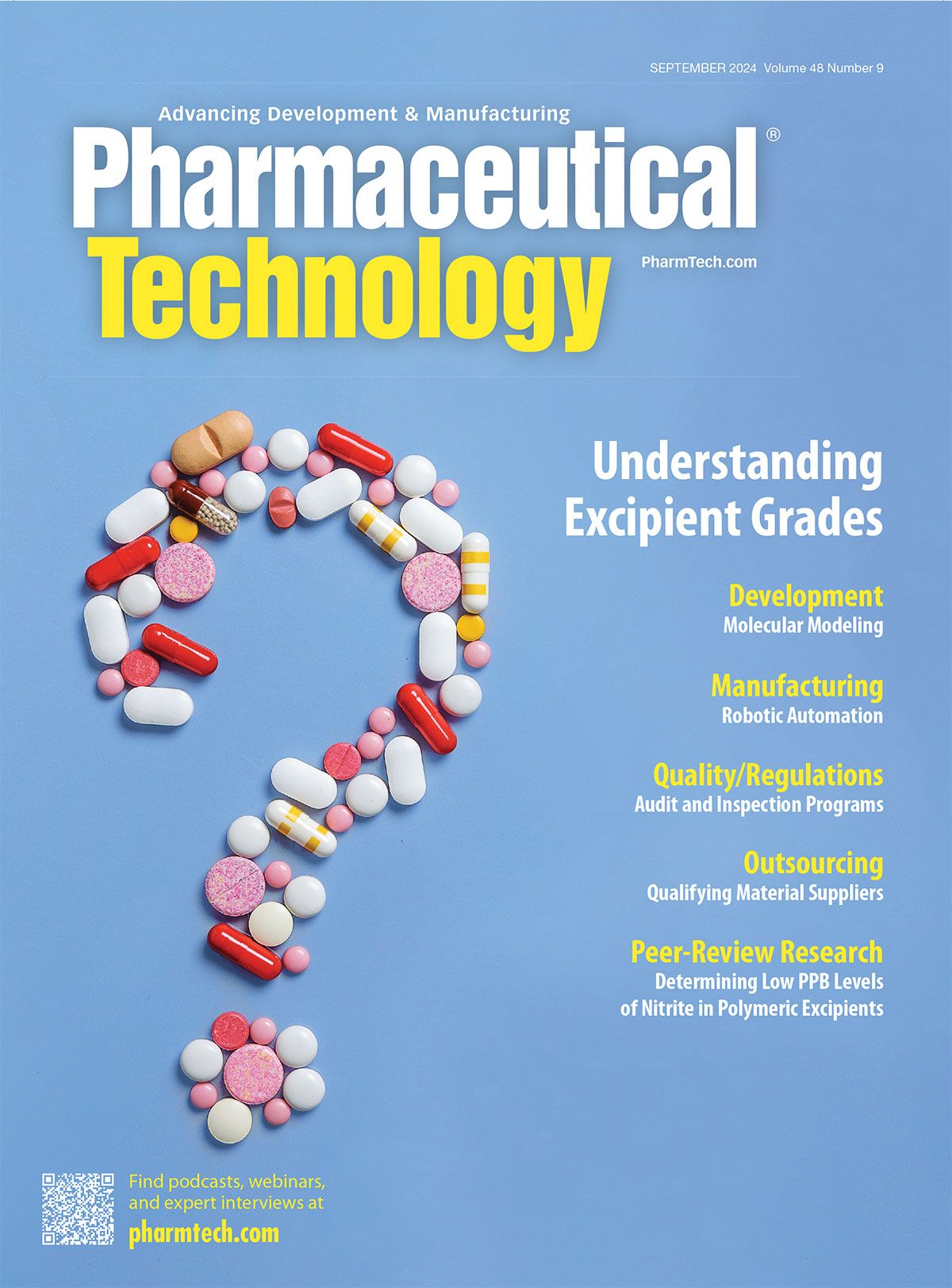Pharmaceutical manufacturers continue to look to automation for efficient fill/finish of parenteral drugs, and new robotic automation technologies offer the opportunity to further improve flexibility and efficiency. New robotic technologies also aim to eliminate the need to open an isolator to perform interventions to better comply with the European Union’s Annex 1 requirements for closed systems (1).
Reducing contamination
At INTERPHEX 2024, equipment supplier, Steriline, demonstrated a new robotic filling machine that uses a magnetically levitated system to transport containers (e.g., vials, syringes, cartridges) instead of conventional mechanical transport. The most significant benefit of this planar motor technology is lower particle generation due to the “zero friction” motion as containers are transported from one station to another, the company explains. Robots are used for loading and unloading, which allows a closed system that is designed for flexibility. The robotic arms can handle multiple container formats, which means it needs fewer change parts.
“The filling machine has the flexibility needed for small batches and can be optimized for the requirements of each process,” adds James Rorke, vice-president of North American Operations, Steriline. “Using asynchronous processing, the timing of each step can be adjusted as needed.”
Steriline uses sensors to detect inaccuracies in filling and stoppering, and the equipment is designed with a method to reprocess noncompliant pieces. In the automation system, the containers can move backwards, for example, to fix a stopper that is flagged during the 100% checkweighing and inspection step, Rorke explains. The design is part of what the company calls its zero-loss philosophy, which continues to move toward more efficient production.
Annex 1 compliance
All pharma equipment for aseptic manufacturing must be designed in compliance with good manufacturing practice (GMP) requirements and, in Europe, the new, recently approved Annex 1 guideline, asserts Paolo Simonazzi, sales director for Americas at IMA Life, which is one of three pharma divisions of the IMA Group. One of the most important challenges for the management of contamination risk is the first air protection principle, he confirms. Designers use computational fluid dynamics to simulate airflow, and the robotic automation is set up so a minimal amount of steam-sterilized parts, such as the filling needle but not any part of the robot, passes over the top of the open vial or other critical surfaces.
The company’s new Injecta fill/finish system is entirely robotized, allowing flexibility for switching between formats and minimal change over time. Compared to traditional automation, robotic automation has less movement and is therefore cleaner, IMA explains. The fully robotic equipment was installed late in 2023 in a new Bayer facility for parenteral medicines in Germany (2). A key requirement was that the machine automation would generate data for paperless production and integrate into Bayer’s management system.
Robotic intervention
New technologies in development allow an operator outside of an isolator to use a robotic arm to perform interventions inside the isolator without breaking the barrier. One of the drivers for the new technology is better compliance with Annex 1, explains Irina Rau, regional sales manager for Stäubli Robotics. Another advantage is avoiding opening the isolator, which would mean losing a batch of product. A challenge is to design the robot’s movements to ensure the ease of use for all operators. Flexibility, sensitivity, and making sure the process stays safe for the equipment and operators are all important. Stäubli has worked with telemanipulation technologies from multiple suppliers, including Force Dimension and SRI, and showcased a use case with AST during INTERPHEX 2024.
A telemanipulation system for sterile manufacturing environments from SRI, a nonprofit R&D institute, is a new extension of SRI’s technology that has been used for decades in robotic-assisted surgeries, as well as other remote applications, such as bomb disposal. SRI’s XRGo software is integrated with commercial third-party robots for remotely controlled repair and maintenance functions inside a sterile area, such as an isolator. This technology is particularly useful for infrequent activities that are not easily automated, such as changing a filter, fixing a machine jam, or cleaning up a broken glass vial, specifies Bill Rusitzky, general manager for XRGo at SRI. Today, these activities are performed either through gloves mounted to the isolator or by sending a gowned operator into the sterile environment, both of which present challenges. As an alternative, robot telemanipulation allows a robotic arm that is fitted with an end effector to be controlled from outside the isolator, operating as a remote extension of the operator’s arm and hand. The operator sees the action of the end of the robotic arm through 3D stereo streaming video to a virtual reality (VR) headset, and the handheld controller provides haptic feedback. A VR interface provides an augmented-reality environment and can add additional views or repair manuals. The video recording and other data can be used to document interventions digitally.
Low-volume and small-batch systems
Although automation has historically been used for high-volume and large-scale processes, new technologies are driving automation down to smaller volumes. Comecer demonstrated its new semi-automatic system for cell and gene therapy filling, ValueCell FILL, at INTERPHEX 2024. The automated system fills 150–175 bags/h from a large mixing bag to smaller bags, which are thermal welded in preparation for freezing. A controller for the mixer allows flexibility in the parameters and in the fill size of the bags. Automation replaces gowned operators performing manual pipetting, which helps alleviate the problem of workforce shortages.
Catalyx, which specializes in automating pharmaceutical manufacturing, inspection, and packaging processes, sees increasing uses of robotic and artificial intelligence-assisted automation. For example, kitting for clinical manufacturing is a high-mix, low-volume packaging process that benefits from robotic automation, because the robot can be programmed to package whatever is needed (e.g., vials, syringes, pens, and leaflet inserts), with very low error rate, says the company, which delivered a system for this application late in 2023. The system uses Catalyx SmartFactory Machine Vision guidance for picking and placing.
“Telemanipulation adds value because the operator can perform the activity remotely,” says Rusitzky. “The operator doesn’t need to be within feet of the equipment; they can be down the hall or the next building. The stereoscopic camera view adjusts automatically so that the operator always feels directly behind the robotic hand. The precise video provides an intuitive, natural understanding of the scene, and the user interface allows people to use it with very limited training.”
Rusitzky explains that the software restricts where the robotic arm can move, so that it doesn’t damage equipment in the isolator. The robot is also programmed to move at the correct speed to avoid disturbing the air inside the sterile environment. SRI has worked with third-party robotic companies, such as Stäubli and Denso, and the system is available for testing use cases.
As with any process change, use of robotic telemanipulation will need regulatory approval before being used in a commercial, GMP process. FDA regulators are aware of the technology, adds Rusitzky, and see that it can be useful.
“Across the pharmaceutical industry, we hear that adoption of this type of technology is a question of ‘when’ not ‘if’,” Rusitzky claims.
“We expect that robot telemanipulation will play a vital role in ensuring precision, efficiency, and safety in pharmaceutical manufacturing,” Jean-Maxime Guay, senior manager, Manufacturing Intelligence at Pfizer, said in a statement. “By allowing people to manage issues without requiring proximity to the process, this technology would help aligning with the new EU [European Union] GMP Annex 1 revision through contamination risk mitigation, in addition to decreasing operational costs.”
SRI is collaborating with INVITE Research, a nonprofit joint research venture formed by Bayer Pharmaceutical and other companies to allow precompetitive collaboration to introduce technologies that can be broadly adopted across the pharmaceutical industry.
Charly Coulon, head of Future Manufacturing Concepts at INVITE, says that telemanipulation is crucial for keeping people out of the sterile environment. “No matter how much effort you put into automation, there comes a time when something unexpected happens and requires you to utilize the unmatched flexibility of a human,” he explains. “Only telemanipulation will allow you to rectify the situation at that moment without sending a human in and breaking sterility.”
One of the challenges for telemanipulation is having enough space inside the isolator available for greater use of robots. In current designs, the isolator space is kept small, which allows people to reach spaces with a glove. In addition, automation systems increasingly use actuators and material guides to increase reliability and avoid incidents, specifies Coulon. Both of these trends limit space. “In my view, the biggest roadblock [to telemanipulation] is the necessary disruptive rethink to build systems differently and isolators significantly larger,” he says. Coulon suggests the effort to automate can be reduced by programming only the expected standard functions and using telemanipulation of robots for anything outside of standard. “[In these rare cases],” he remarks, “you combine the flexibility and ingenuity of a human with the physical presence of the robot on site from a distance.”
References
- EC. Annex 1 Manufacture of Sterile Medicinal Products. EudraLex Volume 4, August 2022.
- IMA. Bayer Chooses Injecta for the Production of Parenteral Medicines. Case Study, ima.it (accessed July 2024).
About the author
Jennifer Markarian is a contributing editor for Pharmaceutical Technology®.
Article details
Pharmaceutical Technology®
Vol. 48, No. 9
September 2024
Pages: 22–23
Citation
When referring to this article, please cite it as Markarian, J. Advancing Robotic Automation. Pharmaceutical Technology 2024 48 (9).

